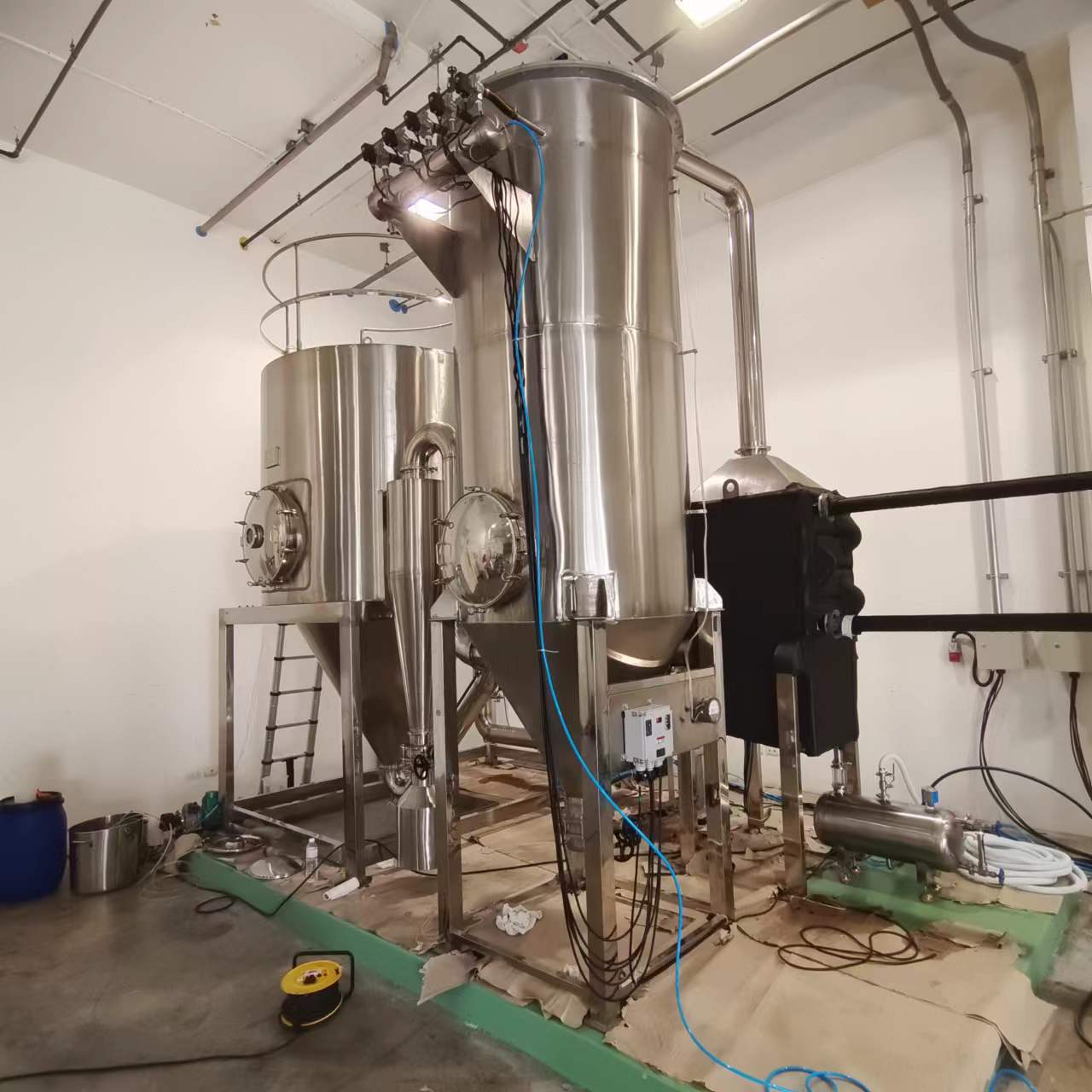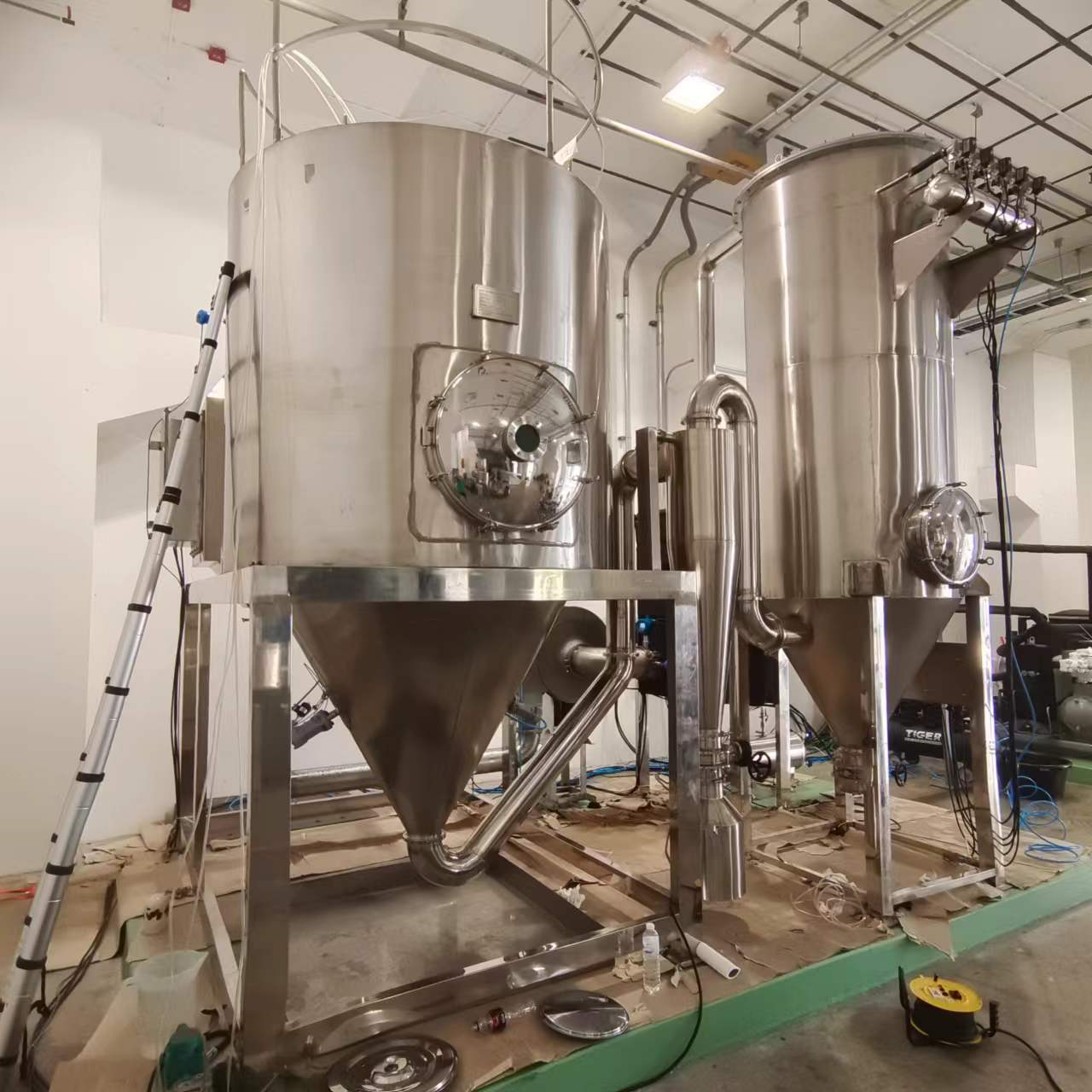Electric heating Spray Dryer
Heating principle
By converting electrical energy into thermal energy, the air is directly heated. Usually, resistance wires or electric heating tubes are used as heating elements with high temperature control accuracy.
Applicable scenarios
Laboratory, small-scale production, or scenarios with strict temperature control
requirements (such as drug and food drying).
Advantage:
Accurate temperature control (± 1 ℃), suitable for thermosensitive materials.
The device has a simple structure, easy installation, and does not require fuel storage or steam pipelines.
No combustion exhaust emissions, good environmental friendliness.
Disadvantages:
High energy consumption and significantly higher operating costs compared to other
methods (especially in large-scale production).
The upper limit of heating temperature is relatively low (generally not exceeding
300 ℃), which is not suitable for high temperature demand scenarios.
Heating principle
Using the steam generated by the boiler to heat the air through a heat exchanger, the
steam condenses and releases latent heat.
Applicable scenarios
Industrial production lines with stable steam supply, such as chemical plants and pharmaceutical factories.
advantage:
Low operating costs, easy access to steam, and low prices.
High thermal efficiency, suitable for rapid heating needs.
Can be combined with other heating methods (such as electric heating) to enhance flexibility.
Disadvantages:
Temperature limitation (usually ≤ 100 ℃, high-pressure steam can reach higher temperatures but with increased risk).
A steam boiler is required, which incurs high initial investment and maintenance costs.
The system is complex and there are safety risks such as high-pressure steam leakage.
3. Heating principle of hot blast stove
High temperature flue gas is generated by burning fuels (such as gas, oil, coal, etc.), and the air is heated by a heat exchanger.
Applicable scenarios
Large scale industrial drying (such as chemical, building materials, and agricultural product processing), especially in scenarios that require high-temperature hot air.
advantage:
High heating temperature (up to 600 ℃ or above), suitable for drying high moisture or high temperature resistant materials.
Low fuel costs (especially when using natural gas or coal) and high overall energy efficiency.
Waste heat can be recycled and reused, with significant energy-saving effects (such as using flue gas waste heat for preheating air).
Disadvantages:
Need to treat combustion exhaust gas, with high environmental pressure (requiring dust removal and desulfurization devices).
The equipment has a large volume and complex installation and maintenance (involving components such as burners and heat exchangers).
Fuel storage and supply rely on external facilities such as gas pipelines and oil storage tanks.
Selection suggestion 1. Electric heating: suitable for high temperature control accuracy requirements, small batch or laboratory scenarios, such as drying of drugs and high value-added foods.
2. Steam heating: Suitable for factories with existing steam supply or materials that require low-temperature stable drying (such as traditional Chinese medicine extracts).
3. Hot blast stove heating: Suitable for high temperature, large-scale continuous production, such as chemical raw materials and mineral drying, requiring supporting environmental protection facilities.
Joint application: Some devices adopt a combination of "steam+electric auxiliary heating" or "hot blast stove+waste heat recovery" to balance energy conservation and flexibility. For example, steam heating is the main method, while electric heating compensates for temperature fluctuations, making it suitable for complex process requirements.
If further optimization of selection is needed, it is recommended to conduct testing and verification based on specific material characteristics (such as thermal sensitivity, moisture content) and production scale.
Large industrial spray drying production line >>
Industrial Liquid Spray Dryer Large Spray Dryer >>

